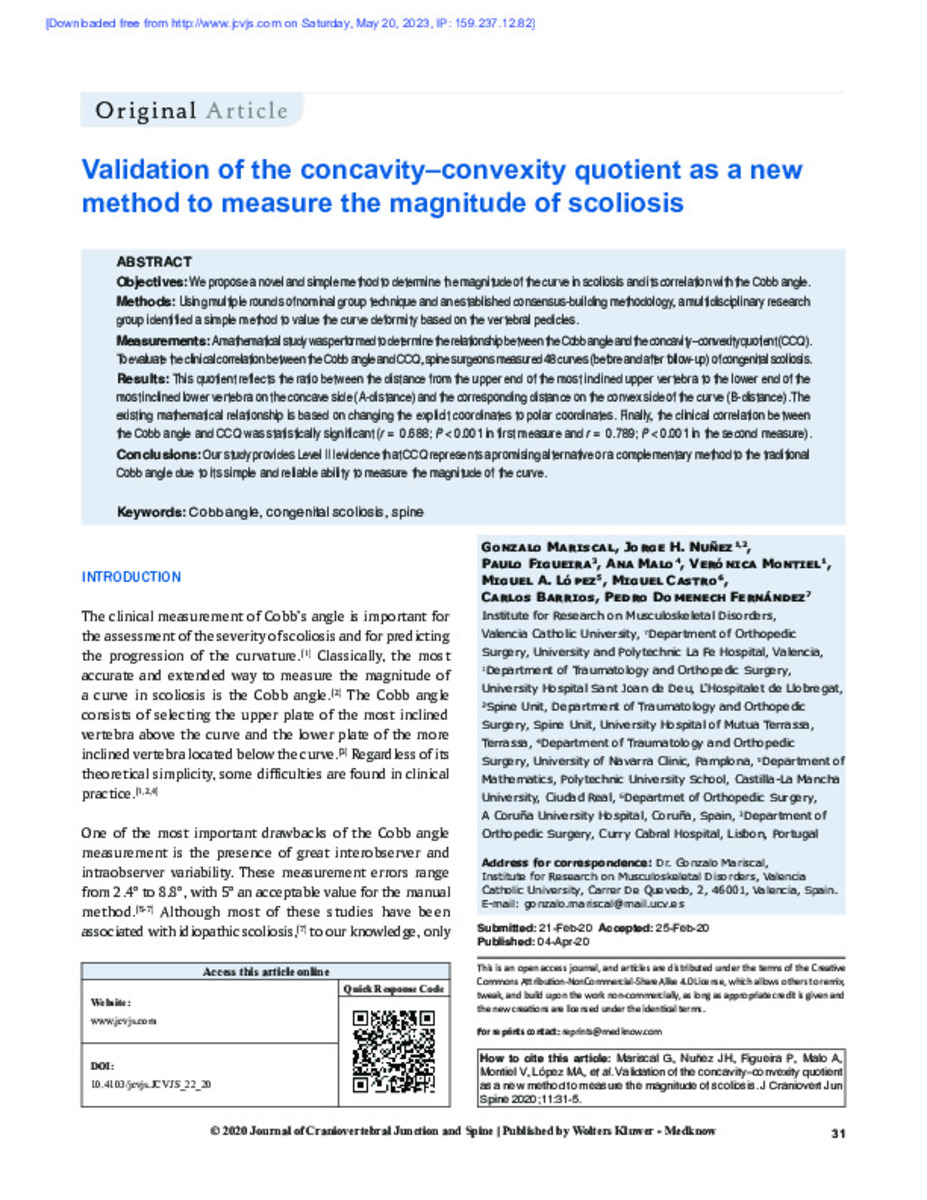Validation of the concavity-convexity quotient as a new method to measure the magnitude of scoliosis.
Palabras clave :
Cobb angle
Congenital scoliosis
Spine
Fecha de publicación :
2020
Editorial :
Wolters Kluwer
Nota:
This is an open access journal, and articles are distributed under the terms of the Creative
Commons Attribution‑NonCommercial‑ShareAlike 4.0 License, which allows others to remix,
tweak, and build upon the work non‑commercially, as long as appropriate credit is given and
the new creations are licensed under the identical terms.
Cita:
Mariscal, G. (Gonzalo); Nuñez, J.H. (Jorge H.); Figueira, P. (Paulo); et al. "Validation of the concavity-convexity quotient as a new method to measure the magnitude of scoliosis.". Journal of craniovertebral junction & spine. 11 (1), 2020, 31 - 35
Aparece en las colecciones:
Estadísticas e impacto
0 citas en

0 citas en

Los ítems de Dadun están protegidos por copyright, con todos los derechos reservados, a menos que se indique lo contrario.








